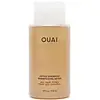What's inside
What's inside
 Key Ingredients
Key Ingredients

No key ingredients
 Benefits
Benefits

 Concerns
Concerns

 Ingredients Side-by-side
Ingredients Side-by-side

Water
Skin ConditioningSodium C14-16 Olefin Sulfonate
CleansingSodium Lauroyl Methyl Isethionate
CleansingCocamidopropyl Betaine
CleansingDecyl Glucoside
CleansingAcrylates Copolymer
Cocamide Mipa
EmulsifyingParfum
MaskingPolysorbate 20
EmulsifyingHydrolyzed Keratin
HumectantHydroxypropyl Guar Hydroxypropyltrimonium Chloride
Vinegar
PEG-150 Distearate
EmulsifyingPolyquaternium-7
Glycerin
HumectantBenzophenone-4
UV AbsorberSodium Chloride
MaskingSodium Hydroxide
BufferingTetrasodium EDTA
Trisodium Ethylenediamine Disuccinate
Isopropyl Alcohol
SolventPropylene Glycol
HumectantCitric Acid
BufferingDisodium EDTA
Chlorphenesin
AntimicrobialSodium Benzoate
MaskingPhenoxyethanol
PreservativePotassium Sorbate
PreservativeLinalool
PerfumingCitronellol
PerfumingCI 14700
Cosmetic ColorantCI 19140
Cosmetic ColorantCI 61570
Cosmetic ColorantWater, Sodium C14-16 Olefin Sulfonate, Sodium Lauroyl Methyl Isethionate, Cocamidopropyl Betaine, Decyl Glucoside, Acrylates Copolymer, Cocamide Mipa, Parfum, Polysorbate 20, Hydrolyzed Keratin, Hydroxypropyl Guar Hydroxypropyltrimonium Chloride, Vinegar, PEG-150 Distearate, Polyquaternium-7, Glycerin, Benzophenone-4, Sodium Chloride, Sodium Hydroxide, Tetrasodium EDTA, Trisodium Ethylenediamine Disuccinate, Isopropyl Alcohol, Propylene Glycol, Citric Acid, Disodium EDTA, Chlorphenesin, Sodium Benzoate, Phenoxyethanol, Potassium Sorbate, Linalool, Citronellol, CI 14700, CI 19140, CI 61570
 Reviews
Reviews

Ingredients Explained
These ingredients are found in both products.
Ingredients higher up in an ingredient list are typically present in a larger amount.
Citric Acid is an alpha hydroxy acid (AHA) naturally found in citrus fruits like oranges, lemons, and limes.
Like other AHAs, citric acid can exfoliate skin by breaking down the bonds that hold dead skin cells together. This helps reveal smoother and brighter skin underneath.
However, this exfoliating effect only happens at high concentrations (20%) which can be hard to find in cosmetic products.
Due to this, citric acid is usually included in small amounts as a pH adjuster. This helps keep products slightly more acidic and compatible with skin's natural pH.
In skincare formulas, citric acid can:
While it can provide some skin benefits, research shows lactic acid and glycolic acid are generally more effective and less irritating exfoliants.
Most citric acid used in skincare today is made by fermenting sugars (usually from molasses). This synthetic version is identical to the natural citrus form but easier to stabilize and use in formulations.
Read more about some other popular AHA's here:
Learn more about Citric AcidParfum is a catch-all term for an ingredient or more that is used to give a scent to products.
Also called "fragrance", this ingredient can be a blend of hundreds of chemicals or plant oils. This means every product with "fragrance" or "parfum" in the ingredients list is a different mixture.
For instance, Habanolide is a proprietary trade name for a specific aroma chemical. When used as a fragrance ingredient in cosmetics, most aroma chemicals fall under the broad labeling category of “FRAGRANCE” or “PARFUM” according to EU and US regulations.
The term 'parfum' or 'fragrance' is not regulated in many countries. In many cases, it is up to the brand to define this term.
For instance, many brands choose to label themselves as "fragrance-free" because they are not using synthetic fragrances. However, their products may still contain ingredients such as essential oils that are considered a fragrance by INCI standards.
One example is Calendula flower extract. Calendula is an essential oil that still imparts a scent or 'fragrance'.
Depending on the blend, the ingredients in the mixture can cause allergies and sensitivities on the skin. Some ingredients that are known EU allergens include linalool and citronellol.
Parfum can also be used to mask or cover an unpleasant scent.
The bottom line is: not all fragrances/parfum/ingredients are created equally. If you are worried about fragrances, we recommend taking a closer look at an ingredient. And of course, we always recommend speaking with a professional.
Learn more about ParfumPhenoxyethanol is a preservative that has germicide, antimicrobial, and aromatic properties. Studies show that phenoxyethanol can prevent microbial growth. By itself, it has a scent that is similar to that of a rose.
It's often used in formulations along with Caprylyl Glycol to preserve the shelf life of products.
Water. It's the most common cosmetic ingredient of all. You'll usually see it at the top of ingredient lists, meaning that it makes up the largest part of the product.
So why is it so popular? Water most often acts as a solvent - this means that it helps dissolve other ingredients into the formulation.
You'll also recognize water as that liquid we all need to stay alive. If you see this, drink a glass of water. Stay hydrated!
Learn more about Water